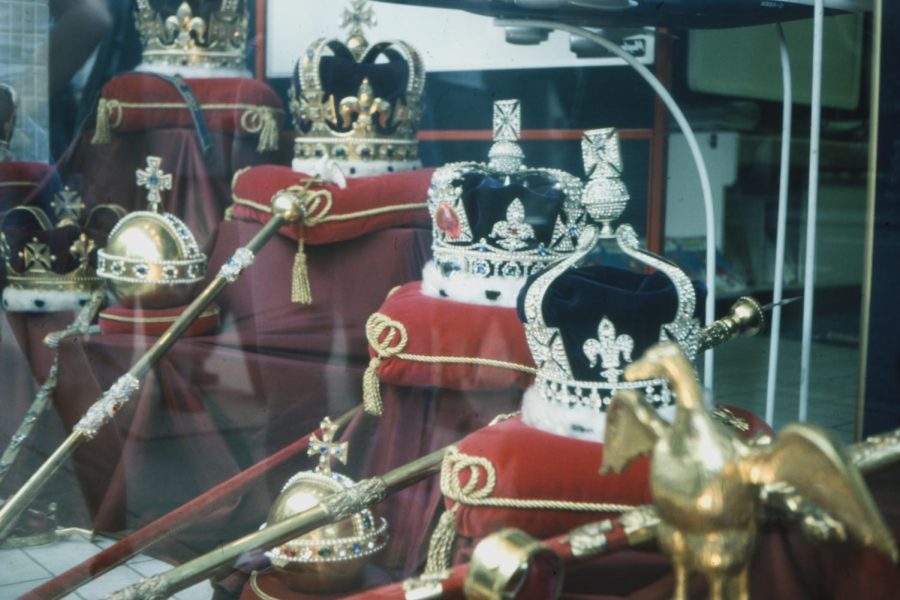British Monarchy, Return Your Stolen Jewels
November 14, 2022
For centuries, the British Monarchy has been a public spectacle. Their lavish lives and powerful global influence have made the famous family a prominent force in both pop culture and human history. While this may seem like cause for admiration, a colonial past still plagues the monarchy. For nearly 400 years, the British Empire was an imperialist power, controlling one-quarter of Earth’s land at one point. The empire had colonies on every continent, but their territories were mainly located in Africa, South Asia, and North America. Unfortunately, numerous precious artifacts, especially jewels, were stolen from several of these colonies. The British monarchy’s loot not only has great monetary value, but also holds important cultural value for its rightful owners. Despite outcry from former British colonies, the monarchy continues to abuse its power by keeping these stolen jewels.
One of the most famous items of loot is the Kohinoor diamond, which was allegedly stolen from India. The Kohinoor diamond’s origin can be traced back thousands of years ago, where it was discovered in an Indian mine and held significance in Hindu beliefs. The gem is believed to have a special curse and originates from the temple of the Hindu god Krishna. It is certainly disrespectful that the British keep the diamond simply for its value, whereas in India, the gem holds more than just monetary glory, but also a deeper meaning. The Kohinoor diamond is a startling 105-carats and belonged to the late Queen Elizabeth II as one of her Crown jewels. Queen Victoria and Queen Alexandra previously wore the coveted diamond as well. This symbol of imperialist history is on display at the Tower of London.
In 2016, the Indian Cultural Ministry stated that they were making “all possible efforts” to return the jewel, yet the Kohinoor diamond still remains in the wrong hands, thousands of miles away.
The British government claimed to see no legal basis for the diamond’s repatriation. This declaration may be true on physical paper, but from a moral standpoint, India has rights to the Kohinoor diamond. The British government continues to indirectly inflict imperialism on India, justifying their conquering of the nation and decisions made while in power, by claiming ownership of their loot.
The Great Star of Africa was also taken from its rightful owners by the British Empire. At over 530-carats, this Crown jewel is the largest clear cut diamond in the world. The Great Star of Africa was taken from South Africa, which was recognized as a former British colony until 1961. The jewel was made from the Cullinan diamond, the same diamond also used to cut the Second Star of Africa. The Cullinan diamond was discovered in 1905 and was a prized product of Africa’s abundant supply of valuable minerals and resources. It was sold to the British and fell into the hands of King Edward VII two years later. Although the transaction was done “willingly,” it is wrong to call the purchase legitimate, given the unfair power dynamic between colonizer and the colonized. The Great Star of Africa was worn in a 1937 coronation, where it sat upon the head of King George VI, and like the Kohinoor diamond, the Great Star of Africa is currently on display at the Tower of London. Showcasing the diamond as a prized possession is not as glamorous as it seems; it is rather a glorification of colonialism.
Outraged by this fact, South African parliament member Vuyo Zungula said, “South Africa must…demand the return of all gold, diamonds stolen by Britain.” This statement was made shortly after the passing of Queen Elizabeth II was announced. But even as growing concern continues to be voiced on this issue, the British royal family in particular has yet to release any sort of formal statement regarding the return of any of its loot.
The British Monarchy should be held accountable for its imperialist history and return its stolen jewels at once. The royal family has a darker past than what most of Western media portrays them to have. By holding onto these precious gems, the institution fails to show remorse. It is impossible for former British colonies to gain back everything lost by the powerful empire. As colonies, South Africa and India were treated with racial inferiority, and faced poverty, exploitation, a lack of free will, and a general systemic disadvantage. The return of these stolen jewels could mark a tentative new beginning, or an era of repayment. By surrendering artifacts such as the Kohinoor diamond and the Great Star of Africa, the rightful owners of these gems can feel a sense of empowerment, taking back a piece of culture from their once oppressive colonizers.
Photo courtesy of UNSPLASH.COM

